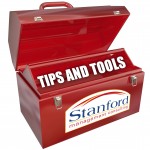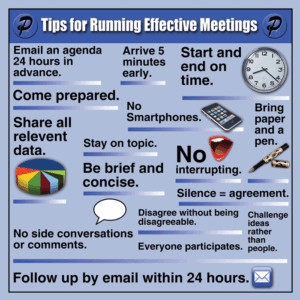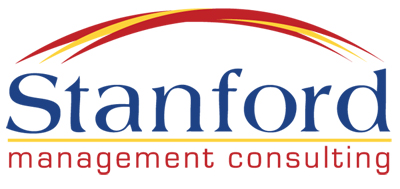 “Julia, my staff and I continue to have meetings but… it feels like we keep talking about the same ole stuff and nothing ever gets done!”
“Julia, my staff and I continue to have meetings but… it feels like we keep talking about the same ole stuff and nothing ever gets done!”
I know the quickest way to get a client to raise their shoulders or roll their eyes and tell me “that doesn’t work here” is to suggest regular staff, management, department, or inter-departmental meetings! Let’s be honest, we have all participated in our share of the long, drawn out, boring, unproductive meetings. Recently, my husband referred to a meeting as a BOGSAT – Bunch of guys sitting around talking!
A meeting is a gathering of people with one or more goals to be achieved. Meetings can be held in a variety of locations. They may be held for a variety of reasons; each with their own particular impact on the organization and the attendees. Overall, meetings should be seen and used as effective vehicles for action and performance.
The biggest problem is how meetings are approached. If meetings are used to debate and harp on problems; they are set up to fail. Recognizing the value of meetings and using a planned approach to running effective meetings will produce much more valuable results.
Value of Meetings
Effective meetings are most valuable to any organization when they promote:
- A sense of involvement
- Criticism-free communication
- Decision making
- Problem solving
- Creativity
- Team building
There are many benefits that arise from the use of meetings, provided that the meetings are effective and focused. These benefits can be seen on several different levels in the organization.
On the Organizational Level
- Improved use of time
- Improved decision making
- Better communication
- Better use of resources
- Multiple perspectives utilized
On the Team Level
- Improved use of time
- Improved decision making
- Better communication
- Better use of resources
- Ownership of processes
On Individual Level
- Improved use of time
- Involvement in decision making
- Better communication
- Better use of knowledge
- Socialization
We can all recognize the benefits of effective meetings but what can we do to make sure we have organized effective meetings that produce the outcome we need?
Making Meetings Work
Meetings are a great venue for communication; unless they are unproductive, chaotic, and turn into gripe sessions and belaboring a problem. Think of the last meeting you attended. How effective/productive was that meeting?
You can improve the quality of your meeting by:
1 – Understanding the need for meetings allows participants to:
- See the real value of an effective meeting process.
- Set objectives for meetings and focus on achieving great outcomes.
- Try to improve meetings as communication and decision making vehicles.
2- Understanding the types of meetings allows participants to:
- Select the appropriate meeting type for the purpose.
- Prevent the downside associated with running the wrong meeting.
- Improve the image of meetings in the organization.
3- Understanding the reasons for failure allows the organizers of meetings to:
- Avoid the main mistakes.
- Remove performance obstacles.
- Plan and resource meetings appropriately.
4- Application of key techniques and skills will cause:
- Improvement in the outcome of meetings.
- Improvement in the level of commitment to and involvement in meetings.
- Better use of meeting time by focus in on key issues through a structured process.
Understanding and applying these guidelines to organize and communicate your meetings will improve meeting outcomes, level of commitment and involvement, and be a better use of time by focusing in on key issues through a structured process.
Formal and Informal Meetings
Formal meetings: are characterized by formal procedures, a structured agenda, and definite roles assigned for running the meeting.
Informal Meetings: are characterized as being more chaotic, energetic, inclusive, and creative while less routine and ordered.
Whether or not a meeting will be formal or informal depends on who the participants are and the topic to be discussed. Other factors are the company culture, what type of business, and location of the meeting. Formal and informal meetings can vary in size and may have very different results.
Small meetings
- People are more likely to attend
- Discussion may be more open
- Less chance of passengers
- Control will be easy
One of my favorite styles of small meetings are “In- Services”. An in-service is a quick but informative type of meeting and is a great way to communicate information to a small group of people taking 15 to no more than 30 minutes. Many times an in-service is use to address a recent problem and provide the “lessons learned” and how the particular problem should be handled in the future. Examples of small meetings in small businesses are departmental meetings or management meetings.
Large meetings
- More ideas can be generated
- More perspectives can be taken into account
- High level of control is required
- Higher level of absenteeism possible
Large meetings in small businesses are typically the monthly company meetings. Obviously, there is a need to take control of time and keep discussions to a minimum.
Agenda
No matter what size or style the meeting is, it should have an agenda. Even a small informal meeting should have a brief agenda to help identify who should attend and what topics are being covered.
Agendas should be circulated sufficiently before any meeting to allow attendees time to prepare. A hastily thrown together meeting will net poor results, or drag on longer than needed.
The agenda for a large or formal meeting and will contain the following:
- Title of the meeting
- Participants names
- Date and time
- Attention drawn to the Minutes from the last meeting, if needed for a formal meeting
- Details of the subject matter
- Reports from any relevant personnel
- Signature lines for all attendees
- Review / additions to a responsibility matrix*
*download a responsibility matrix
The agenda is what is used to drive and control the meeting activities so every effort must be made to ensure that the agenda is both accurate and available. An agenda should be used for all meetings in order to document the information shared. Even an in-service should be documented. However, for small meetings or in-service training the agenda may just be a form outlining what is discussed and signatures of all who attended.
Minutes: Minutes are taken during the meeting as a formal record of what happened in the meeting. Things such as responsibilities for actions must be clearly defined in the meeting and recorded (as on a responsibility matrix). Minutes need to be clear, concise, and accurate. All minutes should be circulated as soon as possible after a meeting to facilitate action. Formal meetings will have more meeting minutes than informal. Typically, small meetings or in-service training will only use an in-service form.
People tend to feel good about their involvement in informal meetings as the higher energy levels lead to less boredom. There are some practicalities that must be attended to in order to increase the performance of the meeting:
- Informal meetings do not work for every topic and don’t fit with all work cultures.
- There needs to be a system for recording what agreements have been made. Example: the Responsibility Matrix
- Minutes need to be produced – even as a short note with actions recorded and responsibilities highlighted for small meetings.
- The place for the meeting shouldn’t hinder communication through the presence of distractions, noise etc.
Success Factors for Meetings
We all view meetings as being successful for different reasons. However the following is a list of some of the main reasons why meetings are successful.
Clear objectives: Without clear objectives the meeting cannot succeed because the purpose is not clear, the correct people may not be present, and the meeting will be unfocused and generally unproductive. Meeting like this tend to never end! By setting clear objectives the participants are more apt to stay the course.
Relaxed atmosphere: When participants are more comfortable they are more apt to focus on the requirements of the meeting than on behavior. It facilitates professionalism and constructive criticism. The goal is to achieve the desired outcome without dealing with distractions or conflict.
Honest, direct and constructive criticism: At a meeting there will often be several points of view or opinion being presented. It is important to present constructive criticism so as to encourage participation and move towards a smart solution. Meetings tend to be most successful when you remove personality from the activity.
Fair distribution of activities: This is important to ensure that all attendees participate. Fair levels of involvement and action points increase the willingness to participate.
Accurate assessment of the capabilities and performance levels of group members: The most successful meetings take into consideration the levels of competencies of the participants in communication, decision making, and leadership. The more vested the participants are in the outcomes the more successful the meeting with be.
Ability to deal effectively with disagreements: In meetings where there are wide differences of opinion it may be necessary to manage a conflict situation to facilitate involvement by non-combatants and ensure a just outcome from the process. Managing conflict allows you to stay on course and conquer the most challenging problems in a company.
Good leadership: As in any organizational process, the presence of good leadership allows the meeting to keep on track, focus on the required outcomes, involve all opinions, protect the process/ participants, and produce a satisfactory outcome.
In “Meetings Don’t Fail- Participants Do part 2″ I’ll talk about Roles and Responsibilities within Meetings, Do’s and Don’ts, People at Meetings, how to Lead a Meeting, Leadership Styles, and Why Meetings Fail.
